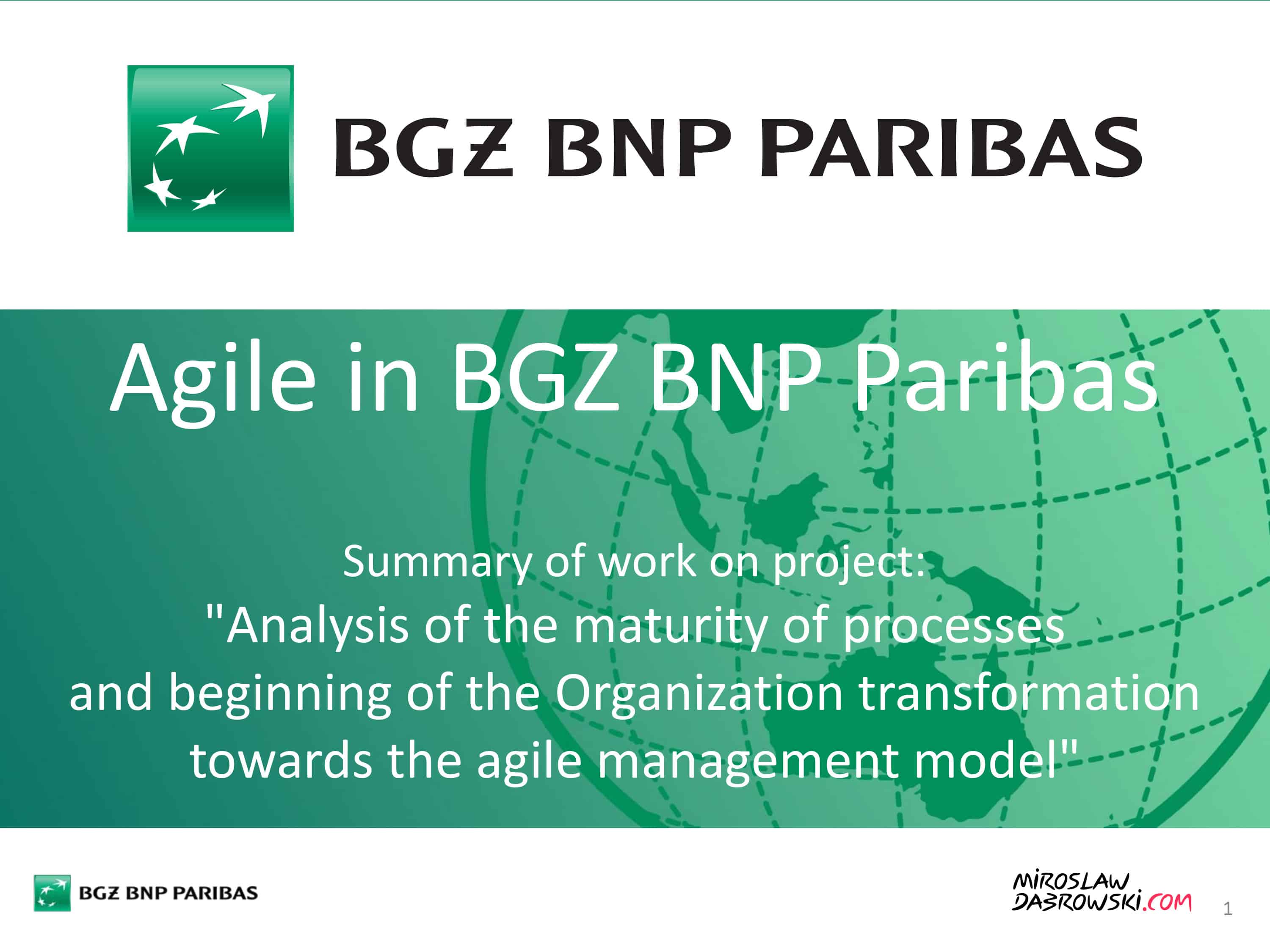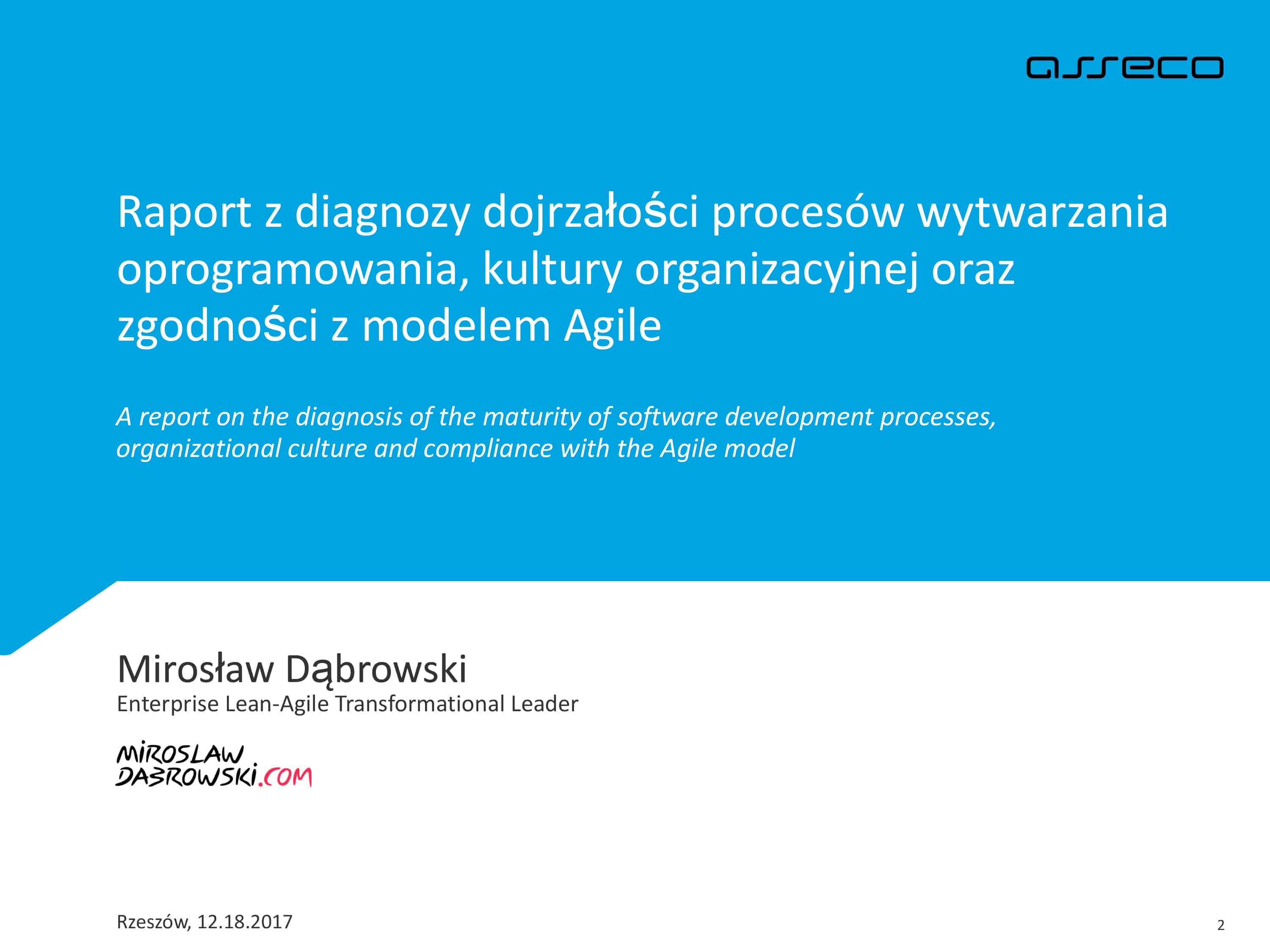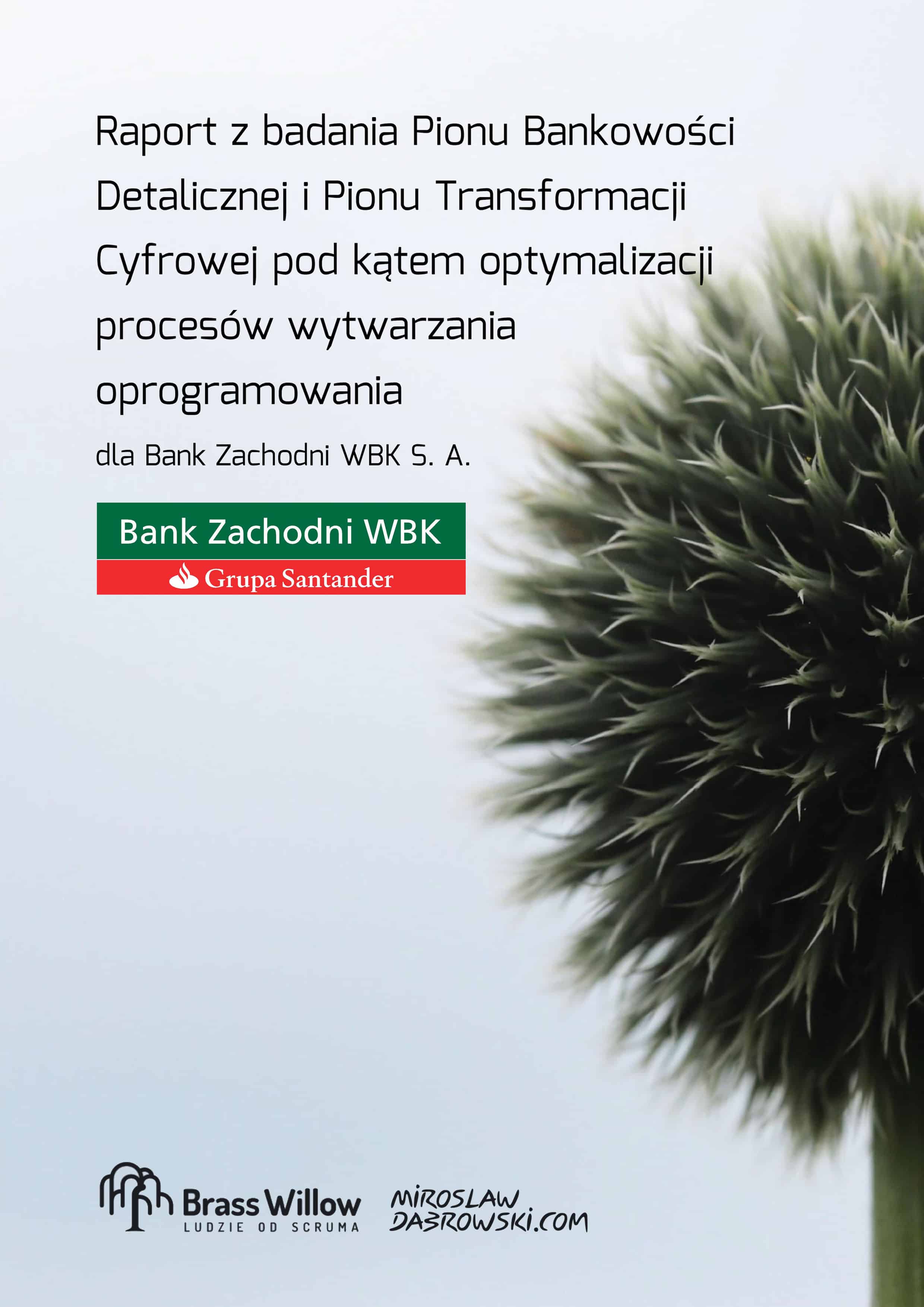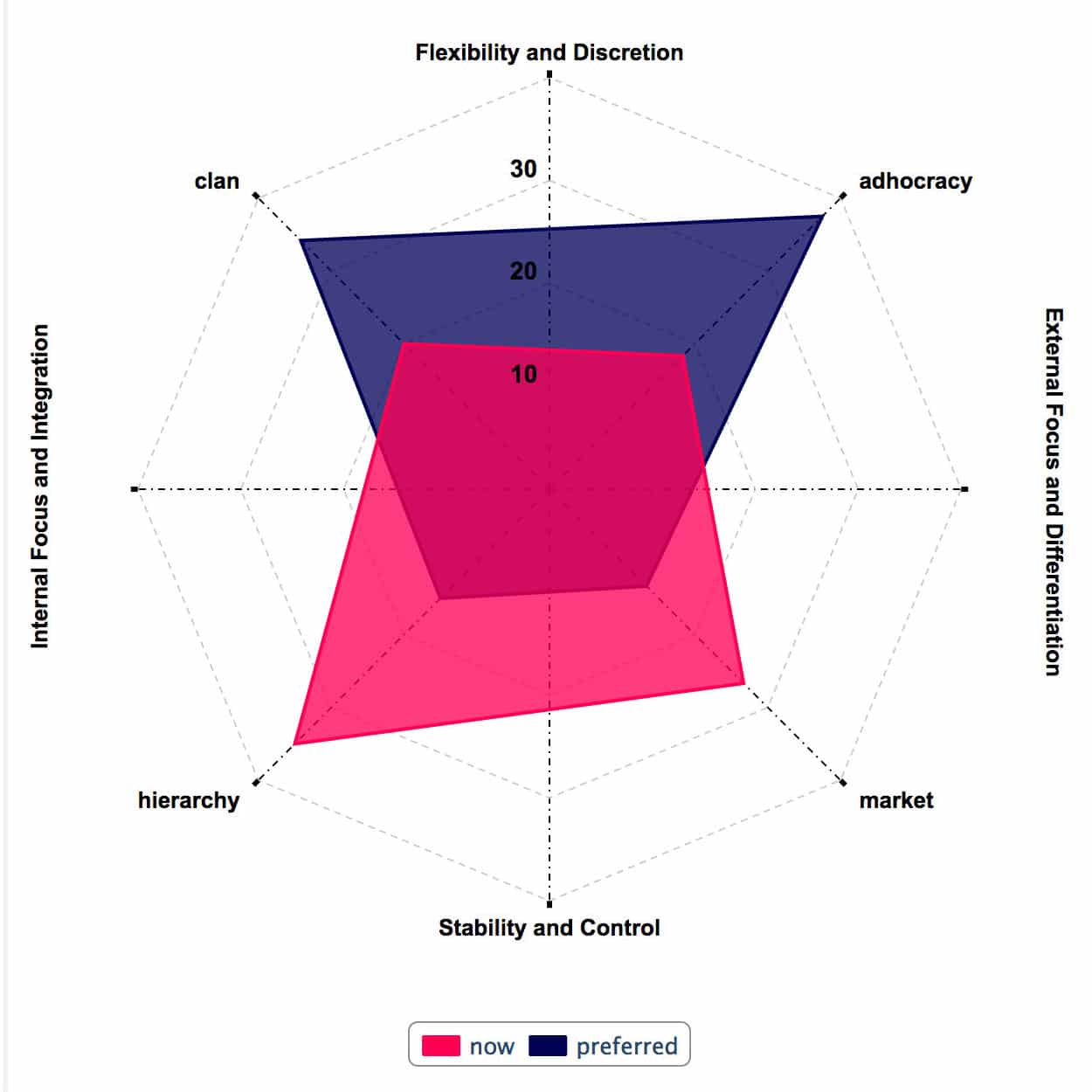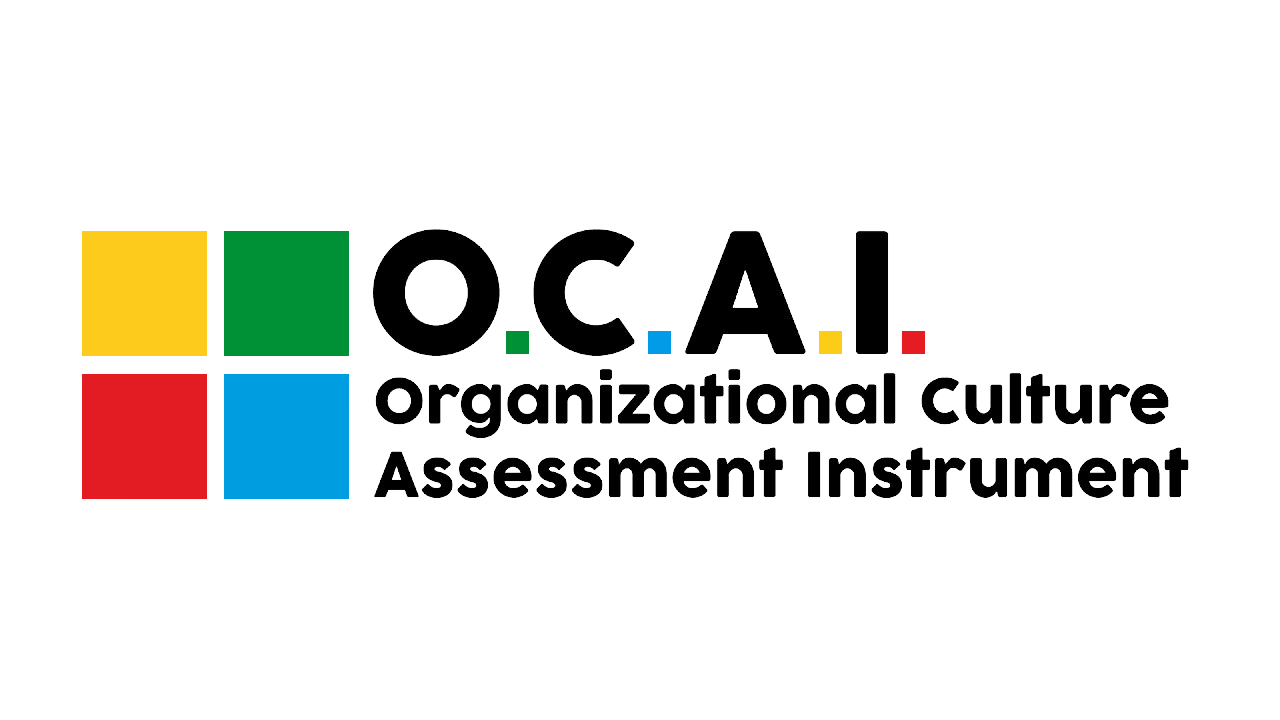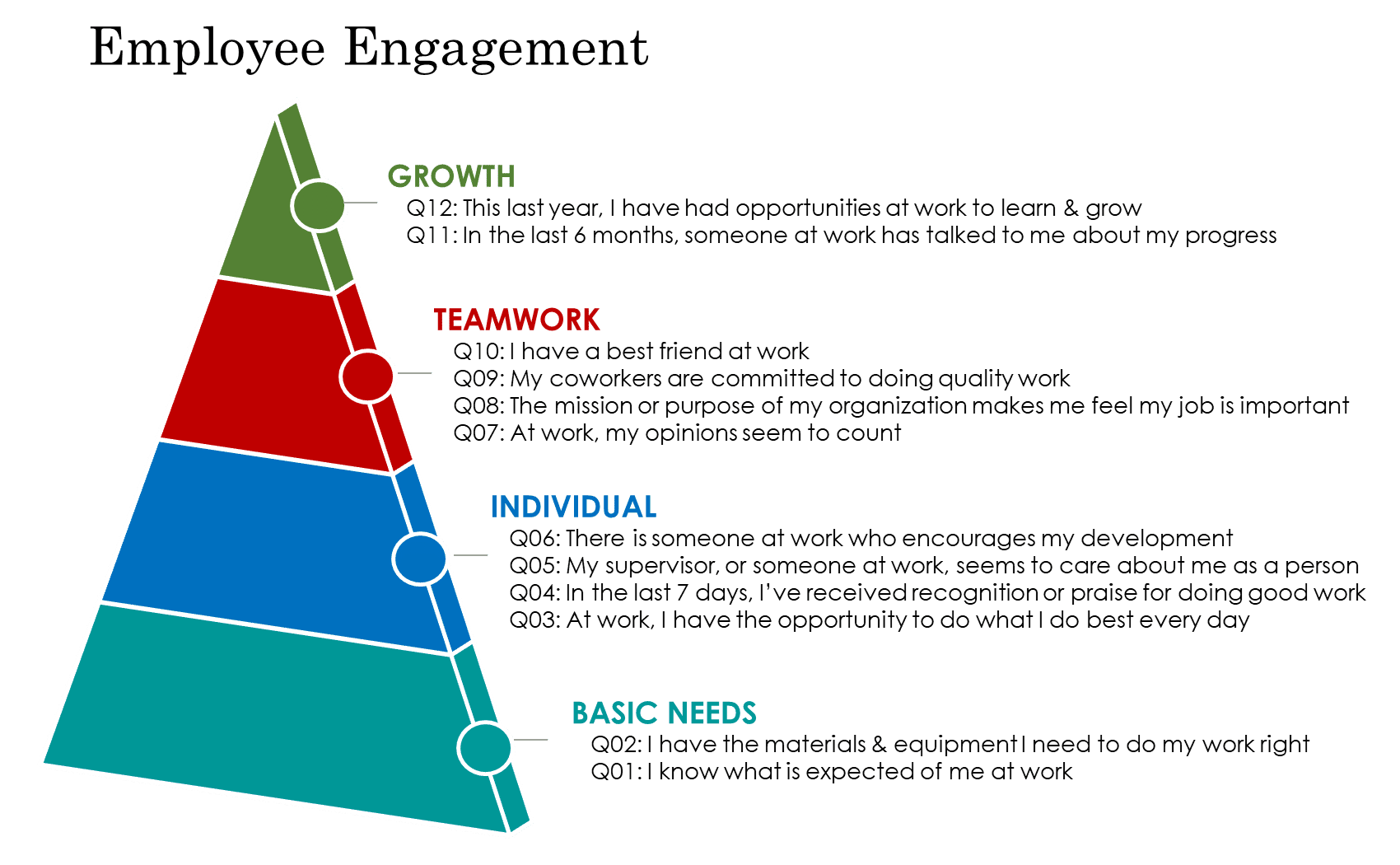Organizational culture is a collection of internal practices and norms of collaboration. It also encompasses the overall atmosphere within the company, team rituals, the company’s value systems, and the attitudes of employees. These are essential elements that identify the organization, enhance a sense of belonging among employees, and allow for the standardization of collaboration methods. Organizational culture and the human habits that accompany it play a crucial role in shaping and consolidating practices present in the enterprise.
Organizational culture
Diagnostic examination
Agility, Agile, or Digital Transformations are not goals in themselves but merely tools to increase organizational capabilities, minimize costs, deliver greater value, and achieve the business goals of the organization. Well-understood and ingrained in human habits, agility allows for much more frequent, predictable, and faster product delivery. Naturally, by increasing competitiveness and gaining an advantage, success in the market or improving credibility as a provider is also achieved, including services provided internally.
The goal of the described diagnosis is not the diagnosis of culture itself, but determining the organization’s potential (Organization Capability) in the application of agile product or service development practices (not limited to IT only).
The study is conducted in all fields of activity of the division/department covered by the study. Its scope covers business issues, structures, procedures, culture and quality (before starting the diagnosis, we naturally sign an NDA).
The study consists of:
- Analysis of management products (documents),
- Reconnaissance visits to the organization’s headquarters or branches,
- The anonymous organizational survey,
- Assessment of organizational culture + report.
After completing these activities, we prepare a written research report and present it along with an explanation.
Research methodology
During the examination and diagnosis of organizational culture, we use various tools, including:
- Anonymous Surveys – involve short surveys conducted on a survey platform, covering at least a representative sample of the examined group of employees. The minimum participation rate is set at 50%, with an optimal target at 75%+.
- Structured Interviews – the researcher seeks specific information and feelings from the interviewee. Since the elements sought are consistent among all participants, the results of such interviews can be subjected to quantitative analysis.
- Open Interviews – an open conversation in which an experienced researcher explores factors influencing work effectiveness. This format allows for the observation of areas specific to the organization and gaining insight into the feelings of individuals in the company on topics that are most important to them.
- Non-participant Observation – an observational method in which the researcher refrains from asking questions and engaging in any way in the event being witnessed. It is worth noting that in Polish national culture, completely non-participant observation is not possible, as the researcher’s presence inevitably influences the observed behavior. However, the researcher is aware of how to minimize this effect.
Process
1. Analysis of management products (documentation)
Before our upcoming visit to your organization’s headquarters, we kindly request the provision of necessary documentation:
- Organizational structure diagram,
- Reporting and delegation of responsibilities pathways,
- System/processes for initiating new projects/initiatives,
- System/processes for prioritizing projects/initiatives.
Additionally, if possible, we will need:
- Key Performance Indicators (KPIs/OKRs and others) applied in the organization for projects/products developed by your organization (especially delivery metrics such as lead time, cycle time, time-to-learn, and stabilization period).
- Information about the business environment of products, such as the business model, value proposition, changes in development costs over time, defect trends, and technical debt.
- Quality reports.
- Results of organizational culture and employee engagement surveys, if conducted periodically.
- Documents specifying organizational standards regarding the process, methods, and tools for product development.
- Product Backlogs and Sprints, if possible up to the last 12 months.
Analyzing this information will allow us to obtain a more comprehensive picture of the SDLC process, especially when combined with data collected on-site during our visit.
2. Fact-finding visits to the organization's headquarters
Staying at the client organization’s headquarters for the purpose of observing the natural work environment typically takes several working days. It primarily serves to gather information from several key management levels:
- CEO/CTO/CIO/CDO/CFO,
- Directors, Line Managers, Project Managers (PMO), Product Managers, Engineering Managers,
- Production teams,
- Partners, clients, or product users.
Additionally, we conduct non-participatory observations within teams during key team meetings in their natural work cycle (preferably planning sessions, status meetings, reporting sessions, committee meetings, Daily Scrum, and the like).
Structured interviews will be conducted with individuals in functional roles (Product Owner, Scrum Master, line manager), while open discussions will be held with the teams.
3. Anonymous organizational survey
We are conducting a study of organizational culture using a brief, anonymous (data is collected on our servers to ensure anonymity and a sense of security for employees) electronic survey, distributed (as needed) to all or selected employees of the organization (the decision to choose employees is made after thorough familiarization with the company’s organizational structure).
The collected data is grouped according to teams, positions, and organizational units, allowing us to identify subtle differences, often serving as a key source of information.
As part of the study, we use the Organizational Culture Assessment Instrument (OCAI) or Competing Values Framework (CVF) tool.

